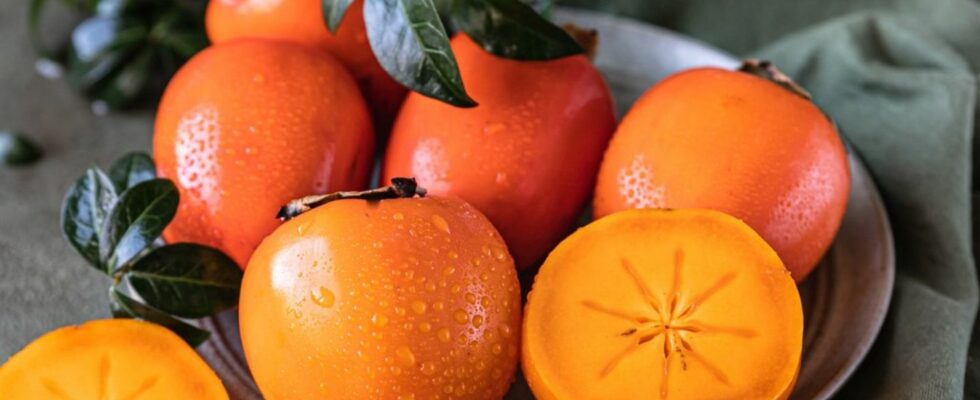Sweet fruit of the gods
Persimmons are so healthy
The taste of persimmon is similar to a mixture of apricot and honeydew melon.
© Maslova Valentina/Shutterstock.com
Sweet, juicy and healthy: the persimmon is convincing across the board. This is what you need to know about the “divine fruit”.
It is orange, looks similar to a tomato and tastes sweet: The persimmon, also known as Chinese quince, Sharon fruit or persimmon, is becoming increasingly popular in this country. In It has been one of the oldest cultivated plants in Asia for over 2,000 years. What is there to know about the persimmon, which is also often referred to as the “sweet fruit of the gods”?
The persimmon grows here
The persimmon trees grow in mild climates and require a warm summer, but can withstand temperatures as low as minus 15 degrees Celsius. They are in season from October to the end of January. The persimmon originally comes from East Asia, particularly China and Japan. It is now grown in 17 countries worldwide, including Spain, South Korea, Azerbaijan, Brazil and the USA.
Not all persimmons are the same
There are numerous varieties of the fruit. The bitter-tasting original type of persimmon is rarely found in the European fruit trade. The Sharon fruit predominates here, which has a much thinner skin and contains no seeds. It comes from Israel and is orange in color.
The slightly more elongated shaped and light red persimmon is similar. It is mainly grown in Spain and also has a very thin shell, but usually still has a few seeds. There are numerous other varieties of persimmons in Asian countries.
Persimmons are so healthy
The persimmon impresses not only with its delicious taste, which is similar to a mixture of apricot and honeydew melon. It also scores points when it comes to nutritional values: it contains vitamin A, vitamin C, potassium and fiber. It is quite low in calories at 71 calories per 100 grams.
By the way: Persimmons are often harvested unripe and then continue to ripen. When unripe, the fruits contain a high proportion of the tannin tannin. It leaves a furry feeling in your mouth. As the persimmon ripens, its sugar content increases and the taste becomes juicy and sweet.
With shell or without?
Depending on the variety of persimmon, the thickness of the peel varies. Fruits with very thick skins taste better when peeled. In principle, the peel of persimmons is edible. It is best to choose organic quality fruits whose peel is untreated. Otherwise: wash thoroughly.
Salad, smoothie or snack
Like most types of fruit, the sweet fruit can be used in many different ways. So it can serve as a snack – cut into wedges or halved and spooned. The persimmon also works well in smoothies, muesli or fruit cake. But it can also be combined well in hearty dishes – for example in fresh salads or vegetable curries.
